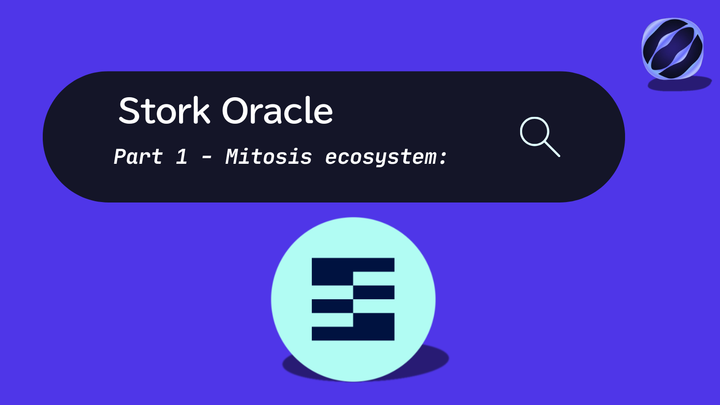Scaling vs. Security: Navigating Ethereum’s Gas-Limit Proposals in 2025

Overview
Ethereum core devs are actively debating two complementary ideas to boost Layer 1 capacity: a one-time fourfold jump to 150 million gas per block via EIP-9678 targeted for the Fusaka hard fork, and an exponential, client-default schedule under EIP-9698 (the “100× over four years” plan) to automatically raise the ceiling from ~36 million to ~3.6 billionFXStreetCoinDesk. Proponents argue these changes would slash on-chain fees and accommodate growth in transaction volume, while critics warn of higher node-operator costs, increased centralization risks, and the potential undermining of security assumptionsCryptoSlatevitalik.eth.limo. In parallel, optimistic and zk rollups on Layer 2—along with sidechains—are already evolving to absorb excess demand, meaning L1 gas-limit hikes may primarily benefit “simple transfers” and shortlived DeFi interactions while shifting architectural emphasis back to Rollup-centric scaling modelsCoinDeskvitalik.eth.limo.
Introduction
Ethereum’s transaction throughput today hovers around 15–20 TPS, constrained by a gas limit of ~36 million gas units per blockCoinDesk. In late April 2025, two major proposals surfaced:
- EIP-9678: A one-off boost from 36 M → 150 M gas per block for Fusaka.
- EIP-9698 (“Exponential Gas Growth”): A deterministic, epoch-by-epoch increase to 3.6 B over four years, raising capacity toward ~2,000 TPS and 6,000 tx/blockCoinDeskMitrade.
Why does this matter? As DeFi usage, NFT minting, and MEV activity surge, Ethereum’s Layer 1 risks choking under demand. Raising the gas limit promises cheaper, faster execution—but also forces an inflection point on node-operator hardware requirements, synchronization times, and decentralization metrics. Understanding these proposals is critical for anyone building or deploying on Ethereum, and informs broader Layer 1 scaling strategies and Blockchain Foundations.
Section 1: Anatomy of the Gas-Limit Proposals
EIP-9678 (“Fusaka Four-X”)
- Goal: Raise the per-block gas limit from ~36 M to 150 M gas.
- Mechanism: A hard-fork EIP drafted by Sophia Gold and discussed at the All Core Devs Execution meeting (April 24) to include client default changes in FusakaFXStreet.
- Rationale: Short-term relief for on-chain congestion; mirrors past incremental bumps (30 M → 36 M in 2024).
⚙️ Implementation risk: Client teams must test against higher limits to catch bugs—historical precedents (e.g. EIP-7840) required extensive QA and node-software updates.
EIP-9698 (“100× Over Four Years”)
- Goal: Automate an exponential growth schedule raising the ceiling from 36 M → 3.6 B gas over four years (approx. 2× every 164,250 epochs)Mitrade.
- Mechanism: Client defaults baked into code; nodes auto-vote for incremental increases each epoch; operators may still override manually.
- Rationale: Moves from ad-hoc miner/operator voting to predictable, hardware-aligned trajectories—supports long-term capacity growth without sudden leapsCoinDeskCryptoSlate.
📈 Performance impact: By EOY 2029, L1 alone could handle ~2,000 TPS, reducing reliance on L2 for simple transfers, though complex dApp interactions may still favor Rollups.
Section 2: Scaling Benefits vs. Security & Decentralization Costs
Lower Fees and Higher Throughput
- Immediate fee relief: EIP-9678’s jump could lower gas prices by ~3–4× in peak periods, making small DeFi interactions economically viable againBinance.
- Increased block capacity: More room for transactions, reducing “gas auctions” that drive fees sky-high during NFT drops or MEV wars.
Node-Operator Burden
- Higher resource demands: Bigger blocks mean longer sync times, larger state sizes, and more disk/network I/O—raising the bar for full-node participationvitalik.eth.limo.
- Centralization risk: If requirements exceed hobbyist capabilities, fewer individuals/businesses will run nodes—contradicting Ethereum’s decentralization principle.
Attack Surface & Consensus Safety
- Larger blocks could amplify DoS risks if malicious actors craft heavy transactions to bloat blocks, necessitating stronger rate-limit mitigations.
- Consensus finality times might be impacted by propagation delays; slower block distribution can lead to higher uncle rates and reduced security margins.
Section 3: Layer 2 & Rollups—Adapting to a New L1 Reality
Optimistic Rollups
- Batching adjustments: With more base-layer capacity, rollups can submit larger or more frequent batches, potentially lowering L2 fees further.
- Sequencer economics: Higher L1 throughput changes fee-market dynamics for sequencers, requiring updated auction models to allocate blockspace efficiently.
ZK Rollups
- Proof-generation cadence: Faster inclusion on L1 helps ZK rollup proofs settle sooner, improving finality guarantees and user UX for instant settlement designs.
- Data-availability trade-offs: More gas might let rollups post on-chain DA directly, reducing reliance on external data layers.
Sidechains & Alternative L1s
- Projects like Polygon PoS or Avalanche subnetworks may need to reevaluate their value-propositions if Ethereum’s L1 begins handling >2,000 TPS natively—making cross-chain liquidity strategies (e.g., via Ecosystem Connections) even more crucial.
Section 4: Community Sentiment & Next Steps
- Core-dev feedback: Lukasz Rozmej and Jochem Brouwer have urged caution—advocating smaller, manual increases (e.g., 2× over six months) to balance safetyCryptoSlate.
- Timeline: EIP-9678 slated for Fusaka in late 2025 (post-Pectra). EIP-9698 may land as a non-hard-fork default change around June 1, 2025, then ramp up automaticallyMitrade.
- Research insights: Vitalik Buterin’s recent L1 scaling essay highlights that gas limit increases should be paired with stateless client work and history-pruning EIPs (e.g., EIP-4444) to keep node-requirements tractablevitalik.eth.limo.
Conclusion & Takeaways
Ethereum’s gas-limit quadruple proposals represent a bold push to keep Layer 1 relevant amid skyrocketing demand.
- Pros: Dramatically lower fees, higher TPS, more “on-chain” DeFi/XP capacity.
- Cons: Heavier node-operator burden, centralization pressure, potential security trade-offs.
- L2 Response: Rollups will evolve batch/DA models; sidechains must re-position for new economics.
As these EIPs advance through ACDE stages, practitioners should:
- Monitor client releases (Geth, Nethermind, Erigon) for gas-limit support.
- Reassess infrastructure requirements (node specs, running light vs. full).
- Adjust Rollup designs to leverage extra blockspace.
❓ How will your application adapt? Will you rely more on L1 or double-down on optimized Rollups? Share your thoughts in our Mitosis contributor Telegram group and explore deeper in our Glossary: Gas and Glossary: Layer 2.
Internal Links
- Liquidity TVL Glossary
- Expedition Boosts
- Straddle Vault
- Mitosis University
- Mitosis Blog.
- Mitosis Core: Liquidity Strategies.
References
- FXStreet: Ethereum devs test a 4× increase in gas limit for Fusaka hard fork FXStreet
- CoinDesk: Researcher behind danksharding proposes 100× gas limit increase CoinDesk
- Binance: Ethereum Developers Propose Significant Gas Limit Increase Binance
- CryptoSlate: Ethereum researcher proposes 100× gas limit hike for network boost CryptoSlate
- Mitrade: Researcher envisions 100× Ethereum gas limit increase Mitrade
- Vitalik.eth.limo: Reasons to have higher L1 gas limits even in an L2-heavy Ethereum vitalik.eth.limo
- CryptoRank: Ethereum researcher proposes 100× gas limit hikeCryptoRank
- Mitosis University, glossary entries for Gas and Layer 2
- Mitosis University, Mitosis Core: Layer 1 Scaling
- Mitosis University, Ecosystem Connections



Comments ()